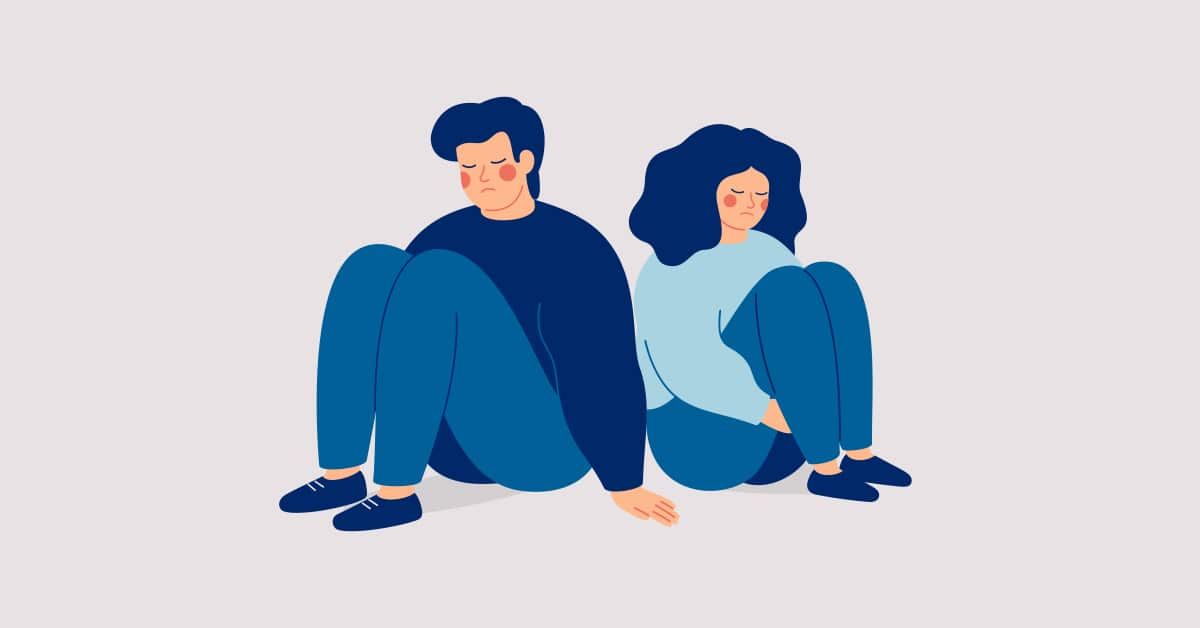Why Is Depression More Common in Women Than Men?

The Albany Clinic • April 23, 2022
Millions of U.S. adults suffer from depression, but it affects more women than men. Like with other conditions, there are many reasons behind this statistic, but science and medicine continue looking for promising treatment options. If you’re a woman suffering from depression, seek care and ask about the best care for your condition .
What is Depression?
“Depression (major depressive disorder) is a common and serious medical illness that negatively affects how you feel, the way you think, and how you act. Fortunately, it is also treatable. Depression causes feelings of sadness and/or a loss of interest in activities you once enjoyed. It can lead to a variety of emotional and physical problems and can decrease your ability to function at work and at home.” It’s estimated that 40 million U.S. adults have depression.
What Causes Depression?
There is no single cause for depression. Instead, there are many contributing factors such as:
- People with depression may have biological variations in their brains , and knowing what they are may help recognize causes.
- Faulty neurotransmitters carry signals back and forth from the brain and different parts of the body. Neurotransmitters may play a significant role in depression and how it’s treated.
- Inherited traits. Depression is more common if you have a blood relative diagnosed with depression.
Know the Symptoms
- Feeling sad or low moods
- Lack of interest in something you used to enjoy doing
- Changes in hunger and unexpected weight loss or gain
- Sleeping problems
- Low energy and more fatigue
- Doing things that don’t make sense, like hand wringing, packing, and the inability to sit still in a manner observable by someone else
- You feel worthless or guilty
- Problems thinking , focusing, or making decisions
- You frequently think of or talk about death or suicide
Why Is Depression More Common in Women Than Men?
Women get depression twice as often as men and can be diagnosed at any age. It’s not a unique condition, but there are reasons why it happens more often with women.
Certain mood changes and depressed feelings happen with regular hormonal changes, but that’s not the only reason. There are biological factors and inherited traits, plus other circumstances and experiences linked with a greater risk of depression.
Even with depression happening at any age for different reasons, women are especially vulnerable between puberty and menopause. Estrogen and progesterone play havoc with serotonin, the brain’s feel-good chemical that inspires feelings of well-being. If a woman’s hormone level plummets, serotonin levels go down, sometimes triggering an infuriating mood shift. Women in their reproductive years are prime candidates for depression.
Of course, there’s more at play than just biology. Women are normally more actively involved in personal relationships than males and consequently suffer more if those relationships are disrupted.
Women also face risk factors that can contribute to depression:
- Premenstrual problems, which can also trigger premenstrual dysphoric disorder (PDD). This can affect about 10 percent of women who have periods.
- Pregnancy. “According to The American Congress of Obstetricians and Gynecologists (ACOG), between 14-23% of women will struggle with some symptoms of depression during pregnancy.”
- Postpartum depression commonly impacts about three million individuals each year in the United States.
- Inequity in power and status compared to men. There’s a greater chance that a woman will live in poverty compared to men, and this creates a flood of worry around “ uncertainty about the future and decreased access to community and health care resources.”
- The stress of working outside the home and shouldering the burden of most home-related chores .
- Women live longer than men. According to the U.S. Centers for Disease Control and Prevention, about 25 percent of people 55 and older get depression.
- More women are diagnosed with depression than men because they seek medical care for the problem.
Diagnosis & Treatment
Diagnosing depression isn’t easy. Symptoms can overlap with other conditions, but the first step is to see a healthcare provider if you think there’s a problem. A medical doctor can perform a physical examination to look for an underlying cause of depression symptoms. A mental healthcare specialist will delve into your thoughts, behaviors, and emotions and try to uncover evidence of personal or family history of mental illness. A final medical opinion depends on comparing your symptoms to the Diagnostic and Statistical Manual of Mental Disorders criteria.
Finally, treatment may include psychotherapy, antidepressants, lifestyle changes, or ketamine therapy to relieve symptoms.
The post Why Is Depression More Common in Women Than Men? appeared first on The Albany Clinic.






